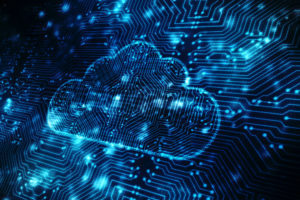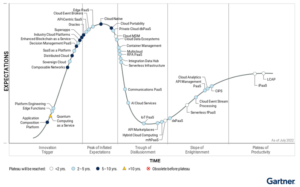
Gartner Highlights iPaaS and Low-code Platforms in Cloud Platform Hype Cycle

Gartner predicts two technologies will play a central role in enterprise data and service integration in the next two years. According to the firm’s “Hype Cycle Cloud Platform Services, 2022,” Integration Platform as a Service (iPaaS) and low-code application platforms will move beyond the hype in less than two years, demonstrating the tangible benefits driving their adoption.
The two technologies are placed on the “Plateau of Productivity” within the Hype Cycle, which is an area representing the mainstream adoption that Gartner says happens when the real-world benefits of an innovation are predictable, broadly acknowledged, and often delivered as out-of-the-box solutions.
Organizations commonly use an iPaaS, which is a suite of cloud services that connects applications with data to support the integration of multiple applications that reside on-premises, in the cloud, or in hybrid deployment scenarios. An iPaaS allows users to develop, deploy, execute, and govern applications without extra hardware or middleware, with the goal of a more rapid time to data value. Integrations can be scheduled, started, or stopped, and users can check the status of their applications with monitoring tools. Such data integration platforms support interoperability between master data tools, data governance solutions, data quality tools, and everything in between.
Gartner predicts that 65.9% of application software spending will go toward cloud technologies by 2025, compared to 57.7% in 2022, a shift to which the company attributes the current and growing popularity of iPaaS solutions. In general, global public cloud services spending is projected to total $498 billion in 2022, an increase of 21% YoY.
“The shift to the cloud is boosting growth in the iPaaS market,” said Yefim Natis, distinguished VP analyst at Gartner. “iPaaS has moved to early mainstream adoption globally, reaching 20% to 50% of the global target audience who will use iPaaS offerings to integrate not only applications and data, but also ecosystems, APIs and business processes.”
The company says iPaaS is attracting large organizations, along with midsize and small firms, due to its ease of access, versatility, and low initial cost. Worldwide iPaas end-user spending is projected to total $5.6 billion in 2022, up 18.5% from 2021.
“Organizations choose iPaaS to support rapid integration and automation of SaaS applications with other SaaS and on-premise applications and data sources. More recently organizations are increasingly replacing classic integration platforms, that are now considered too expensive and complex for modern integration delivery practices,” said Natis.
Low-code application platforms, the second technology highlighted, are also moving to mainstream maturity according to this Hype Cycle. Gartner estimates the LCAP revenue market will add up to $7.4 billion in 2022 for a 28.4% increase YoY. Demand is high for self-service tools that can support developers as well as business users in automation initiatives such as the digitization of records, and Gartner forecasts that by 2024, hyper-automation functionality will be the dominant competitive differentiator among low-code development tools.
“In the context of the increasing demand for fast business change, LCAPs provide organizations an opportunity for accelerated digital innovation,” said Natis.
Gartner customers can find the “Hype Cycle for Cloud Platform Services, 2022” at this link.
Related Items:
Hands-Off: Manual Data Integration Tasks Plummeting, Gartner Says
Back to Basics: Big Data Management in the Hybrid, Multi-Cloud World
Key Considerations for Choosing a Cloud Integration (iPaaS) Solution




























